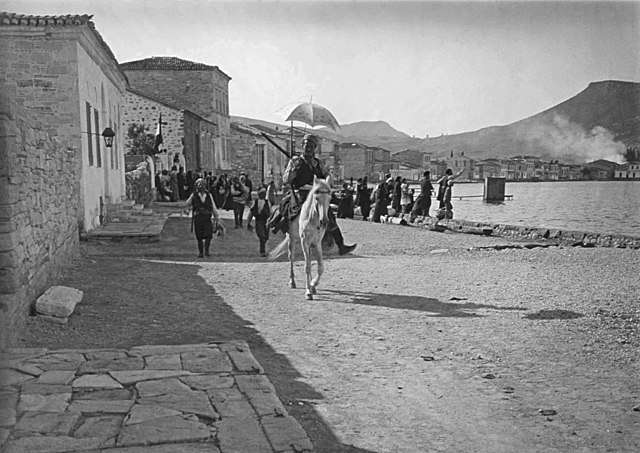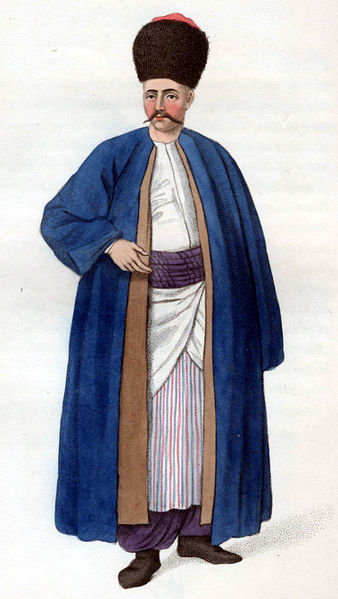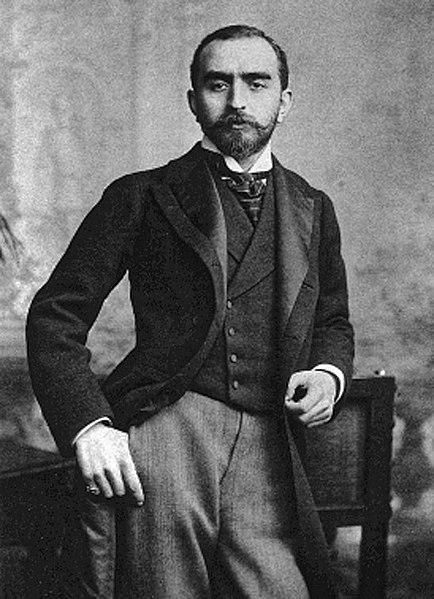The Armenian genocide was the systematic destruction of the Armenian people and identity in the Ottoman Empire during World War I. Spearheaded by the ruling Committee of Union and Progress (CUP), it was implemented primarily through the mass murder of around one million Armenians during death marches to the Syrian Desert and the forced Islamization of others, primarily women and children.
Column of Armenian deportees guarded by gendarmes in Harput vilayet
The Armenian quarter of Adana after the 1909 massacres
Muslim bandits parading with loot in Phocaea (modern-day Foça, Turkey) on 13 June 1914. In the background are Greek refugees and burning buildings.
Armenian defenders in Van, 1916
Armenians in the Ottoman Empire
The Ottoman Armenian population mostly belonged to either the Armenian Apostolic Church or the Armenian Catholic Church. They were part of the Armenian millet until the Tanzimat reforms in the nineteenth century equalized all Ottoman citizens before the law. Armenians were a minority in the Empire. They played what would later be seen as a crucial role in Ottoman industry and commerce, and Armenian communities existed in almost every major city of the empire. Despite this, Armenians were heavily persecuted by the Ottoman authorities especially from the latter half of the 19th century, culminating in the Armenian Genocide.
An "Armenian bey", the executive authority on Armenian reaya. The bey was part of civil administration.
Costumes of the Ottoman Empire extending to Muslims, Christians, Jewish communities, clergy, tradesmen, state and military officials were strictly regulated during the reign of Süleyman the Magnificent.
Calouste Gulbenkian, internationally known businessman and philanthropist born in 1869 at Üsküdar
Armenians in Western Armenia,1896








